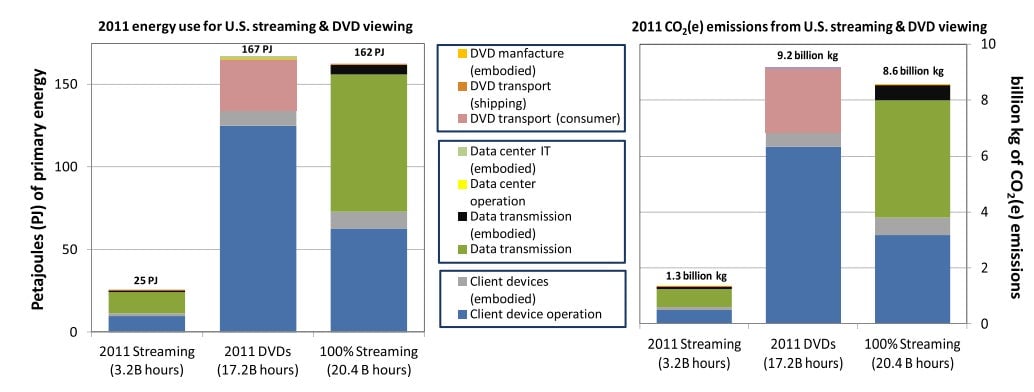Scrapping DVDs is good for the environment—but not as good as you’d think
The decline of the DVD in favor of streaming video services has been great for consumers, but unexpectedly good for the planet too. In 2011, if all of the video watched on DVD had instead been streamed, it would have saved 30 petajoules (30 million billion joules) of energy, enough to power 200,000 American homes for a year, and would have reduced CO2 emissions by around 2 billion kilograms, according to a new paper from researchers at the Lawrence Berkeley National Laboratory and Northwestern University.


The decline of the DVD in favor of streaming video services has been great for consumers, but unexpectedly good for the planet too. In 2011, if all of the video watched on DVD had instead been streamed, it would have saved 30 petajoules (30 million billion joules) of energy, enough to power 200,000 American homes for a year, and would have reduced CO2 emissions by around 2 billion kilograms, according to a new paper from researchers at the Lawrence Berkeley National Laboratory and Northwestern University.
One factor, obviously, is that DVDs have to be made, shipped, and stored, while streaming videos don’t. Streaming does require big data centers full of servers, but they turn out to account for less than 1% of the energy costs associated with streaming; most of the rest comes from the data transmission. In addition, streaming video is often watched on more modern and efficient devices like laptops and tablets, which use less energy than DVD players hooked up to TVs.
Surprisingly, while you might think abolishing DVDs saves a gigantic amount of energy and waste, data transmission is pretty energy-intensive too. Here is the researchers’ chart showing energy use and carbon emissions from DVDs and streaming in 2011, as well as their estimate of the energy use if streaming replaced DVDs; as it shows, the overall saving would be only about 15% in energy terms and 18% in CO2 terms:

Moreover, the environmental benefits might in reality be even more muted. The ease and ubiquity of streaming means that we watch substantially more video online now. It’ll take more research to find out if improvements in transmission, better devices, and advances in cloud technology help make up for the increase in energy use. Additionally the quality and resolution of streaming video is rapidly increasing, and that means more data transmission, which might increase energy costs.
Still, at least it will mean not having to work out what to do with all those old DVDs you no longer watch.